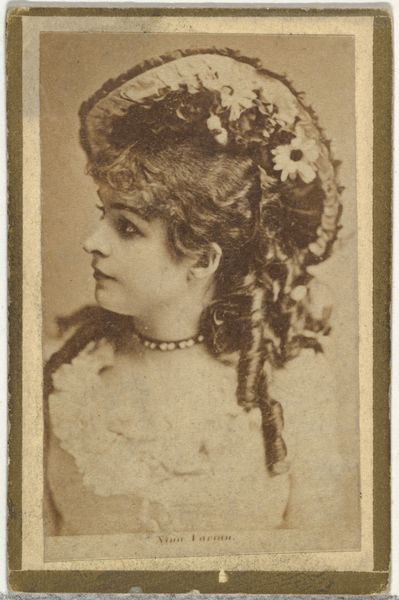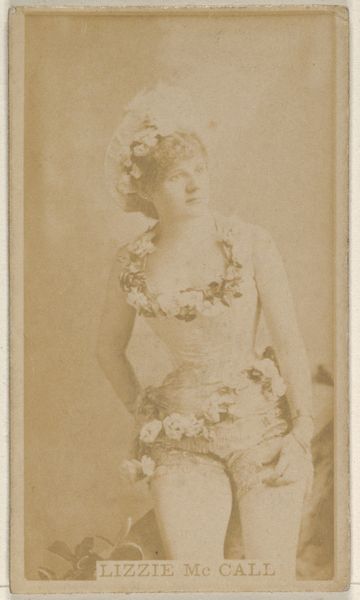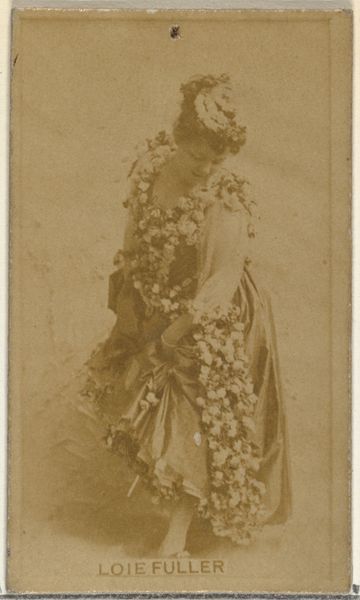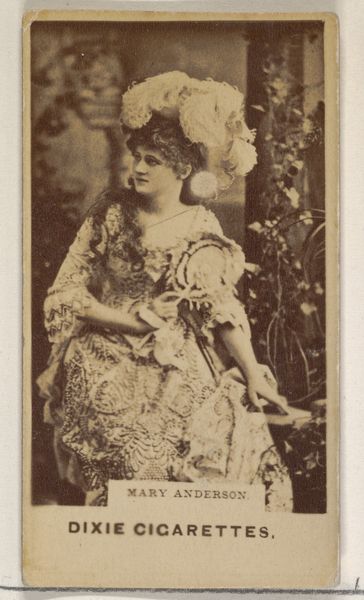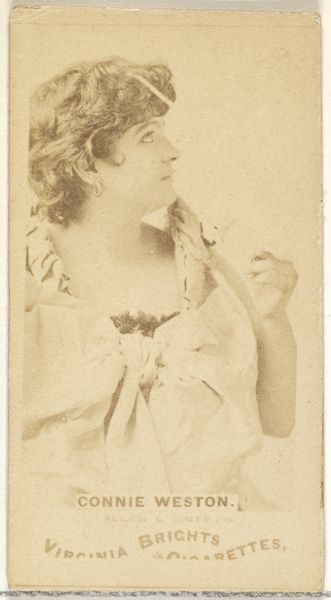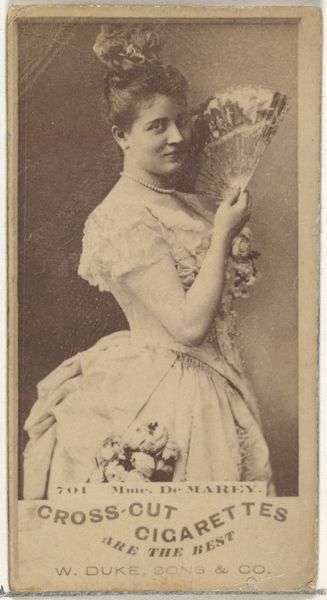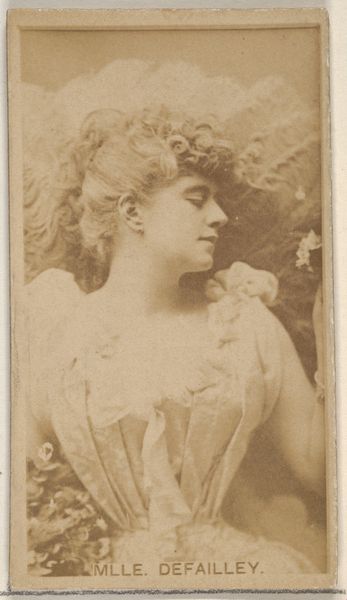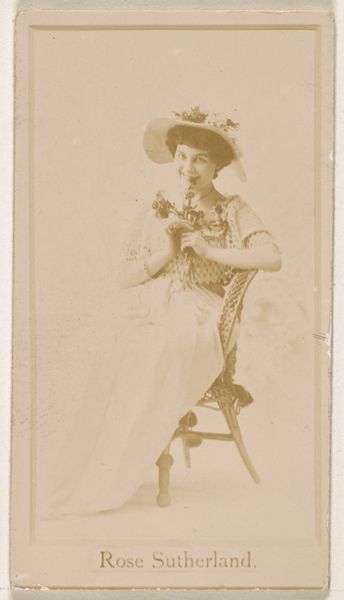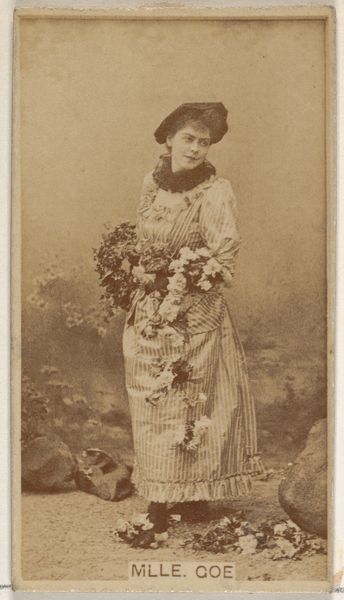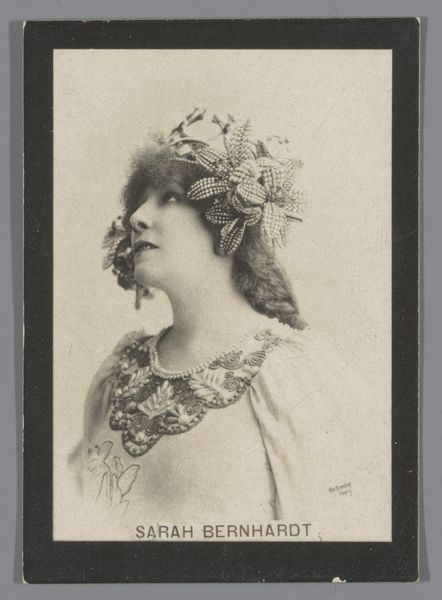
Dahlia: Dignity, from the series Floral Beauties and Language of Flowers (N75) for Duke brand cigarettes 1892
0:00
0:00
drawing, print, paper
#
portrait
#
drawing
#
art-nouveau
# print
#
paper
#
genre-painting
Dimensions: Sheet: 2 3/4 × 1 1/2 in. (7 × 3.8 cm)
Copyright: Public Domain
Editor: This is "Dahlia: Dignity," a print from 1892 created by the American Tobacco Company for Duke brand cigarettes. The floral arrangement framing the woman almost feels like a cage. How would you interpret this piece? Curator: Well, it's tempting to dismiss it as mere advertising ephemera, but let's dig deeper. Consider the title "Dignity" paired with the dahlia, and the woman’s expression, which exudes a certain controlled… sadness? How might that speak to the role of women at the turn of the century, commodified even as they were meant to embody virtue? Editor: So, it's like she’s dignified but constrained, just like the flower she's representing? Curator: Precisely. Think about the Language of Flowers itself. It was a way for women to communicate feelings and desires in a society that often stifled their voices. The Dahlia, associated with dignity but also instability, creates an interesting tension with this woman's somewhat mournful portrait. Given that this card would have been collected and traded, how did its symbolism play into broader social structures? Editor: That's a compelling idea. It seems that these pretty images also convey deeper social anxieties. What does this mean for current gender roles in society? Curator: I wonder, in our present era, amidst all of the cultural complexities involving commodification and expectations around behavior, appearance, expression, can we use this piece to advocate for societal reform, challenge normative views of expression and beauty standards? Can you find ways to encourage this? Editor: I didn't expect such a complex discussion from a cigarette card! It's shown me how everyday objects can reveal social truths. Curator: Exactly! And understanding those truths is the first step in dismantling them. These pieces should always start the dialogue on such matters, no matter how small the item may be.
Comments
No comments
Be the first to comment and join the conversation on the ultimate creative platform.
